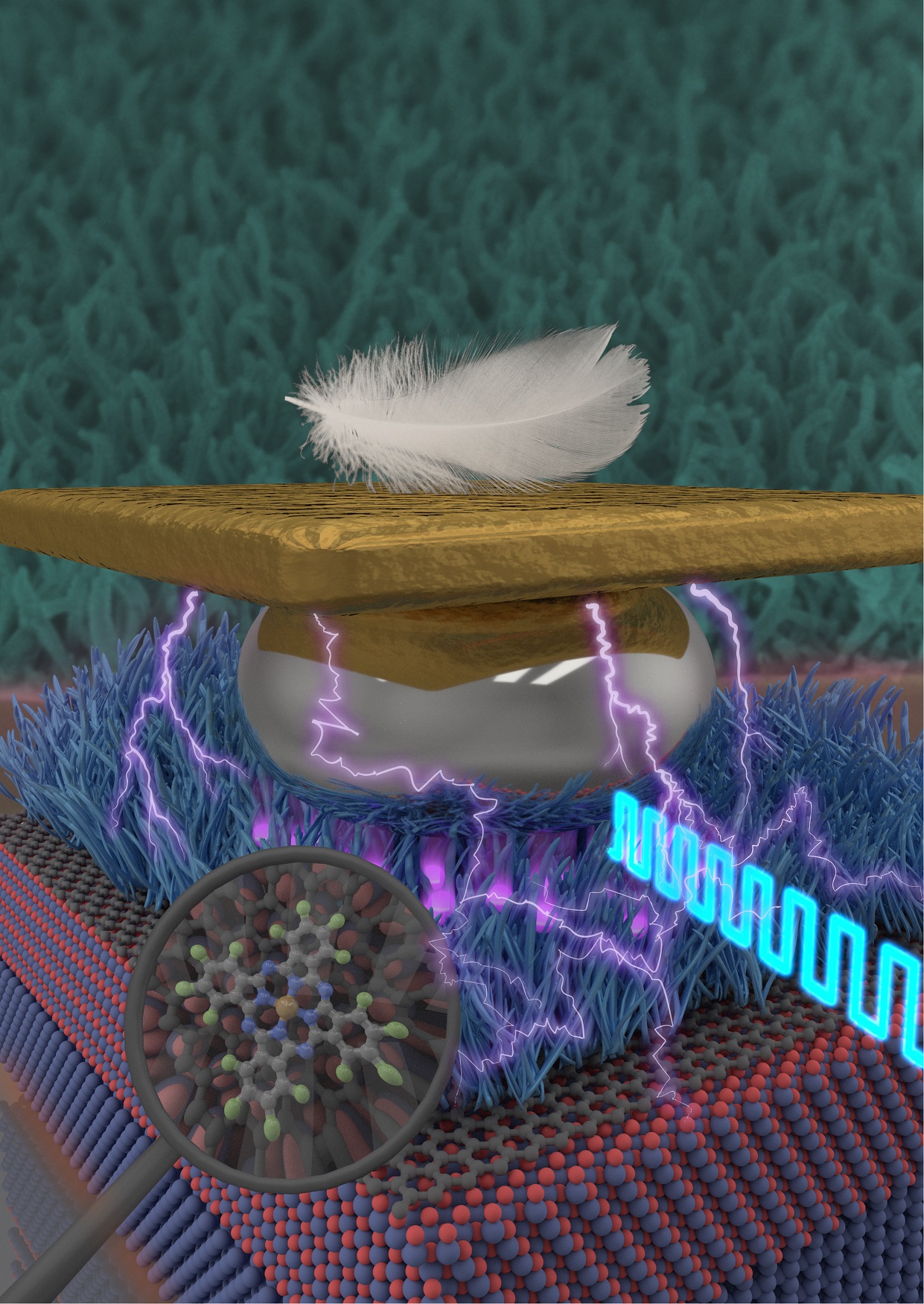[Small] An Elastic Interfacial Transistor Enabled by Superhydrophobicity
We report the ultimate "softness" that leads to record-high surface pressure sensitivity and detection limit.

Enabling mechanical responsiveness in field‐effect transistors (FETs) offers new technological opportunity beyond the reach of existing platforms. Here a new force‐sensing concept is proposed by controlling the wettability of a semiconductor surface, referring to the interfacial field‐effect transistors (IFETs). An IFET made by superhydrophobic semiconductor nanowires (NWs) sandwiched between a layer of 2D electron gas (2DEG) and a conductive Cassie–Baxter (CB) sessile droplet is designed. Following the hydrostatic deformation of the CB droplet upon mechanical stress, an extremely small elastic modulus of 820 pascals vertical to the substrate plane, or ≈100 times softer than Ecoflex rubbers, enabling an excellent stress detection limit down to <10 pascals and a stress sensitivity of 36 kPa−1 is proposed. The IFET exhibits an on/off current ratio exceeding 3 × 104, as the carrier density profile at the NW/2DEG interface is modulated by a partially penetrated electrostatic field. This study demonstrates a versatile platform that bridges multiple macroscopic interfacial phenomena with nanoelectronic responses.
